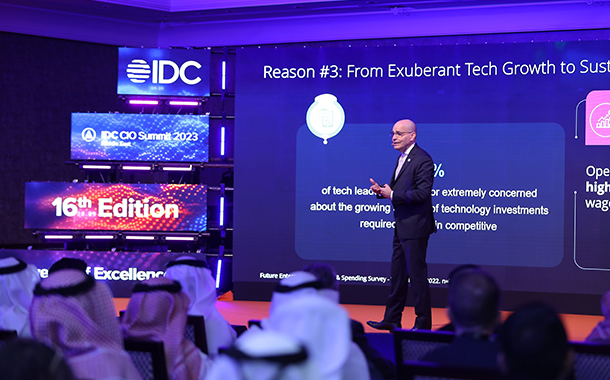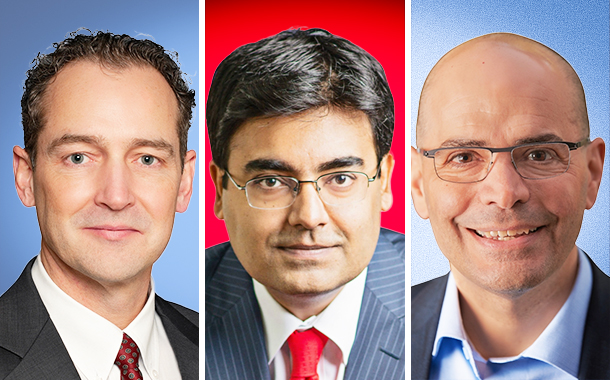Digital transformation, the primary buzzword in the Middle East region, is driving adoption of supporting technologies such as cognitive systems, virtual and augmented reality, robotics, and IoT. However, increasing complexity as well as larger than normal, complex and persistent threats, is driving spending in cyber security. IDC forecasts that spending on IT security in the Middle East, Turkey, and Africa is set to cross the $2.7 billion mark this year, growing 10.2% on 2018.
IDC attributes this growth to the fact that security incidents are becoming far more complex and persistent, with a new breed of stealthy attackers using vulnerabilities in systems and even the Internet of Things IoT to bring down services.
Globally, the challenges of privacy have grabbed the attention of Boards of Directors as regions look to implement privacy regulation and compliance standards similar to GDPR. Privacy is the new buzz word and the potential impact is very real. The result is that demand to comply with such standards will continue to buoy security spending for the foreseeable future. Banking will be the industry making the largest investment in security solutions, followed by discrete manufacturing and federal government.
Running alongside 3rd Platform solutions like cloud, mobile, social, and big data analytics, these innovation-accelerating technologies are creating a complex ecosystem that is beset by new IT security challenges. In this new era, security must become more pervasive. Organisations can no longer settle for standard solutions; they must move forward by embracing a proactive approach to the issues of defense, protection, mitigation, compliance, trust, and risk.
Worldwide spending on security-related hardware, software, and services is forecast to reach $133.7 billion in 2022. Although spending growth is expected to gradually slow over the 2017-2022 forecast period, the market will still deliver a compound annual growth rate of 9.9%. As a result, security spending in 2022 will be 45% greater than the $92.1 billion forecast for 2018.

“Digital transformation is becoming increasingly mainstream across the region, with emerging technologies such as cognitive systems, virtual and augmented reality, robotics, and IoT gaining traction, says Megha Kumar, IDC’s Research Director for software in the META region. “In this new era, security must become more pervasive. Organisations can no longer settle for standard solutions; they must move forward by embracing a proactive approach to the issues of defense, protection, mitigation, compliance, trust, and risk.”
Globally, the challenges of privacy have grabbed the attention of Boards of Directors as regions look to implement privacy regulation and compliance standards similar to GDPR. Privacy is the new buzz word and the potential impact is very real. The result is that demand to comply with such standards will continue to buoy security spending for the foreseeable future. Banking will be the industry making the largest investment in security solutions, followed by discrete manufacturing and federal government.
Security-related services will be both the largest, $40.2 billion in 2018, and the fastest growing, 11.9% CAGR category of worldwide security spending. Managed security services will be the largest segment within the services category, delivering nearly 50% of the category total in 2022. Integration services and consulting services will be responsible for most of the remainder. Security software is the second-largest category with spending expected to total $34.4 billion in 2018.
Endpoint security software will be the largest software segment throughout the forecast period, followed by identity and access management software and security and vulnerability management software. The latter will be the fastest growing software segment with a CAGR of 10.7%. Hardware spending will be led by unified threat management solutions, followed by firewall and content management.
Security remains an investment priority in every industry as companies seek to protect themselves from large scale cyber-attacks and to meet expanding regulatory requirements. While security services are an important part of this investment strategy, companies are also investing in the infrastructure and applications needed to meet the challenges of a steadily evolving threat environment.
The United States will be largest geographic market for security solutions with total spending of $39.3 billion this year. The United Kingdom will be the second largest geographic market in 2018 at $6.1 billion followed by China $5.6 billion, Japan $5.1 billion, and Germany $4.6 billion. The leading industries for security spending in the US will be discrete manufacturing and the federal government. In the UK, banking and discrete manufacturing will deliver the largest security spending while telecommunications and banking will be the leading industries in China. China will see the strongest spending growth with a five-year CAGR of 26.6%. Malaysia and Singapore will be the second and third fastest growing regions with CAGRs of 21.1% and 18.2%, respectively.



Key takeaways
- Running alongside cloud, mobile, social, big data analytics, innovation technologies are creating a complex ecosystem beset by security challenges.
- Organisations can no longer settle for standard solutions and must move forward by embracing a proactive approach.
- Security must become more pervasive.
- Challenges of privacy have grabbed the attention of global Boards of Directors as regions look to implement privacy regulation.
- Privacy is the new buzz word and the potential impact is very real.
- Global banking will be making the largest investment in security followed by discrete manufacturing, federal government.
- United States will be largest geographic market for security solutions.
- The United Kingdom will be the second largest, followed by China, Japan, Germany.

























